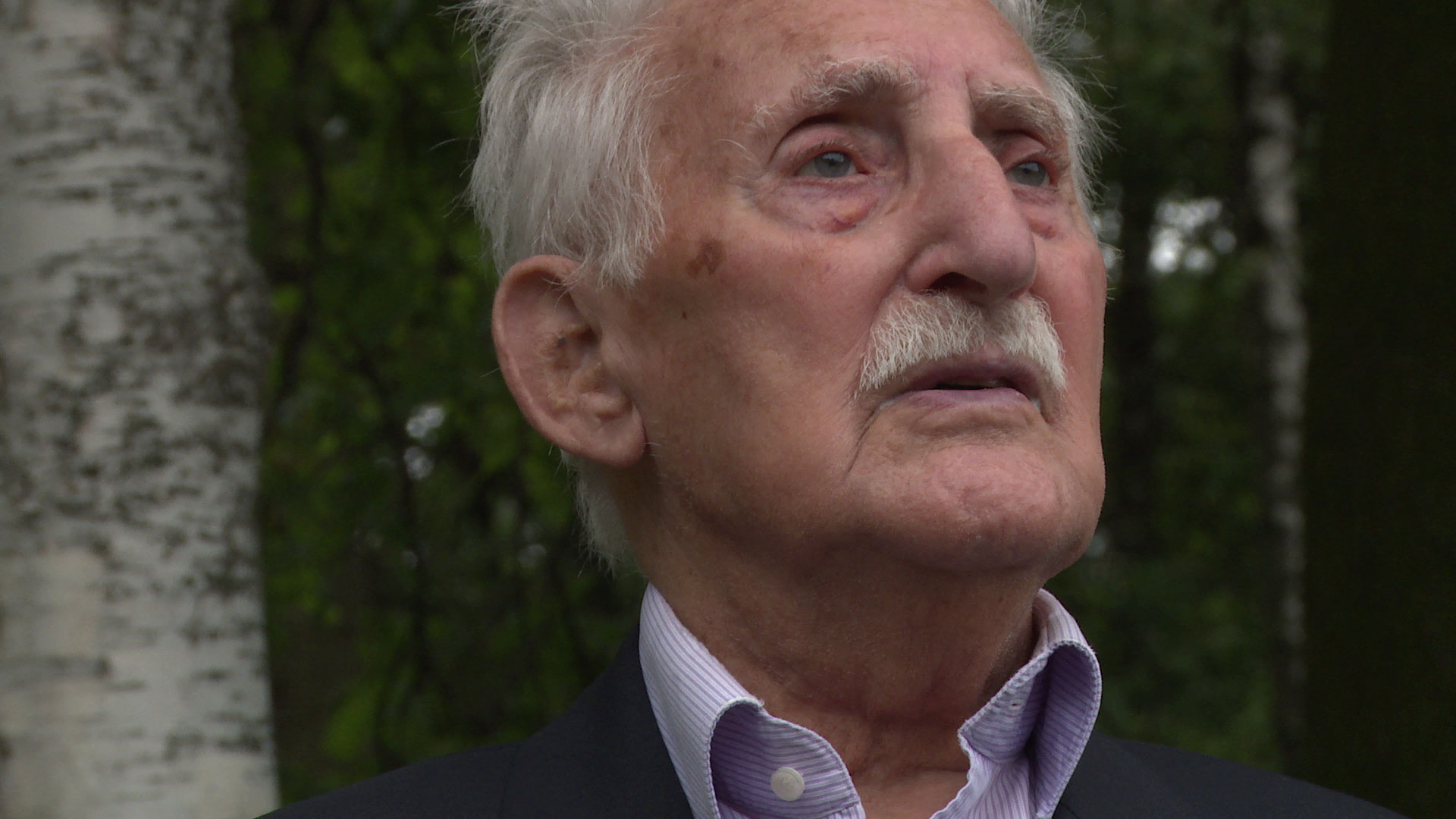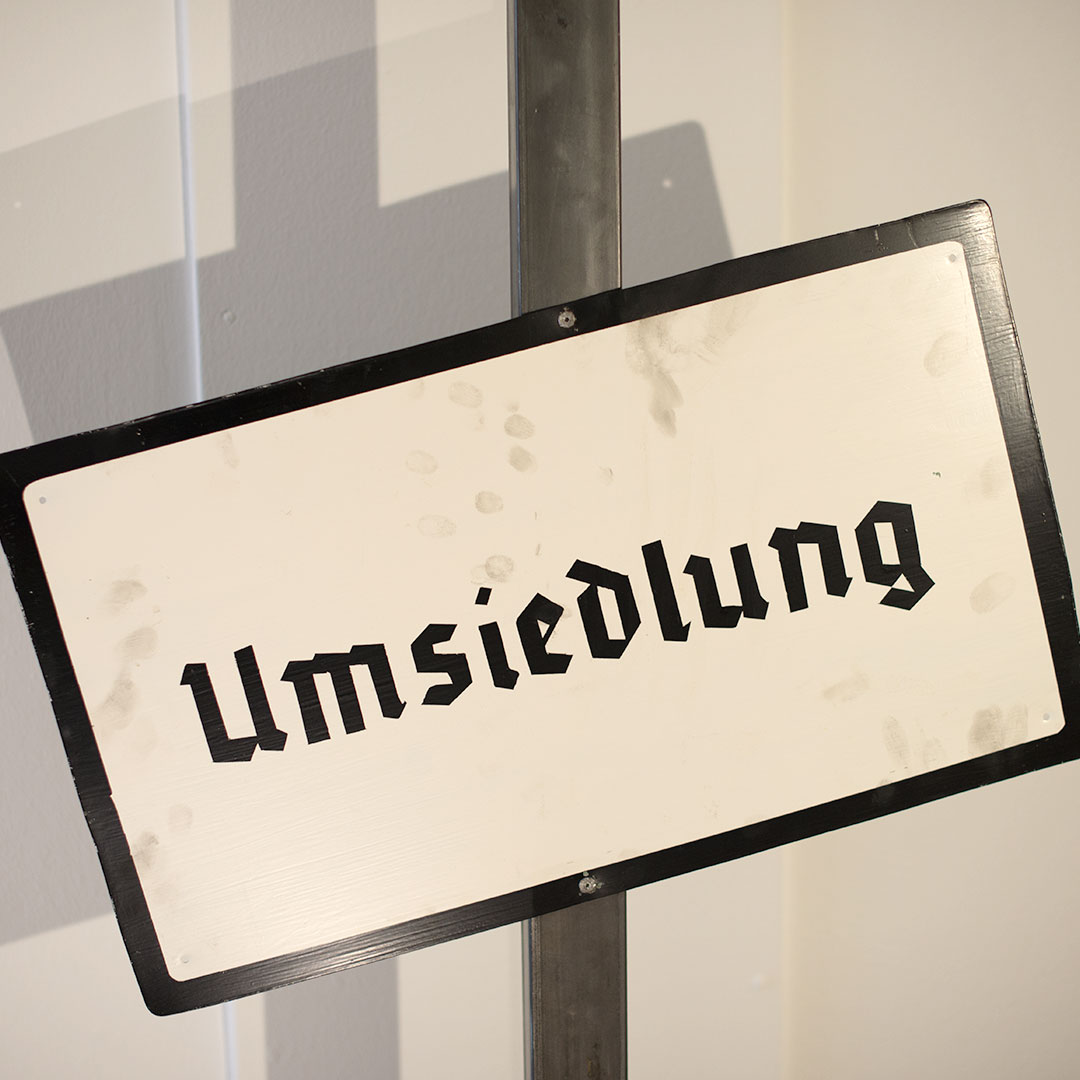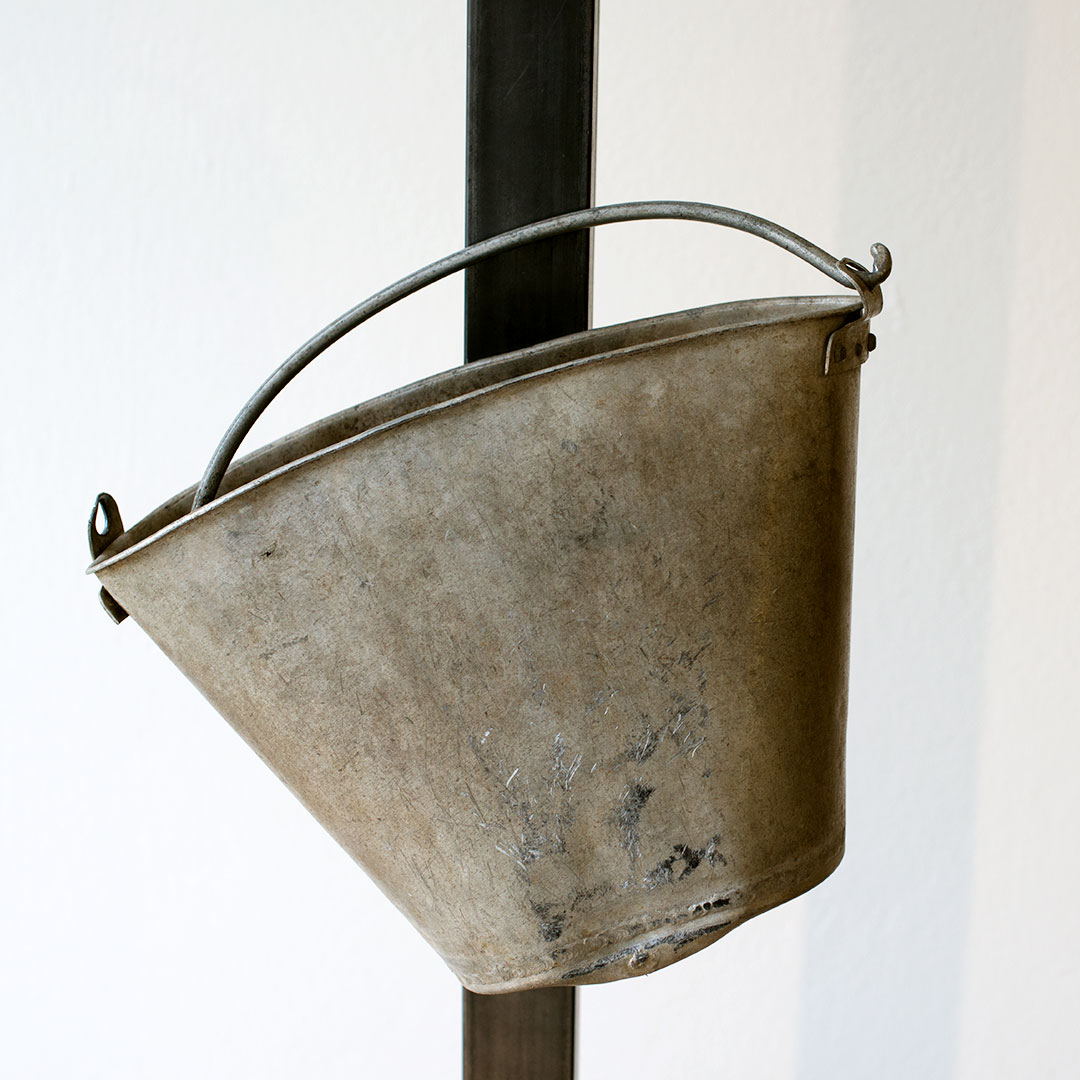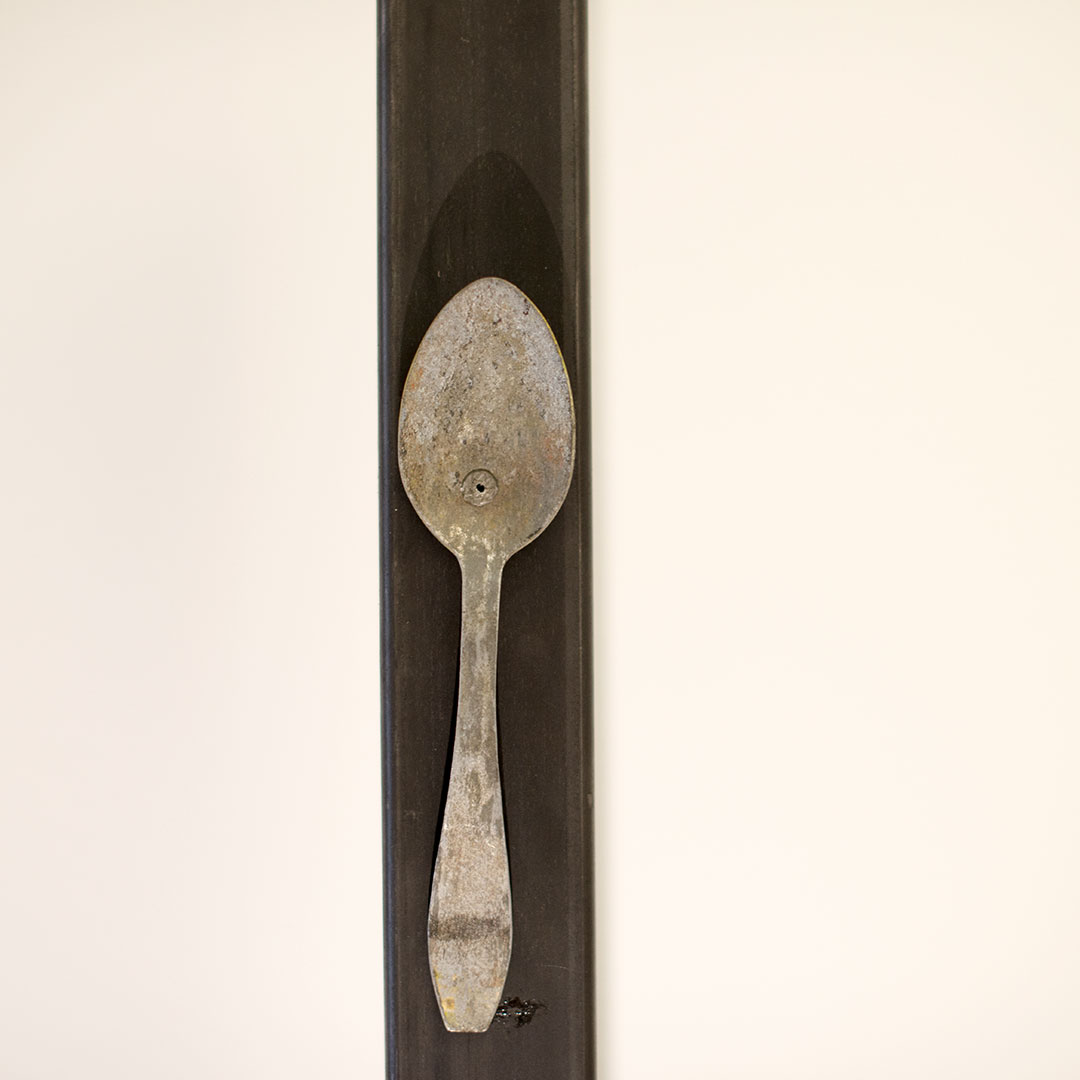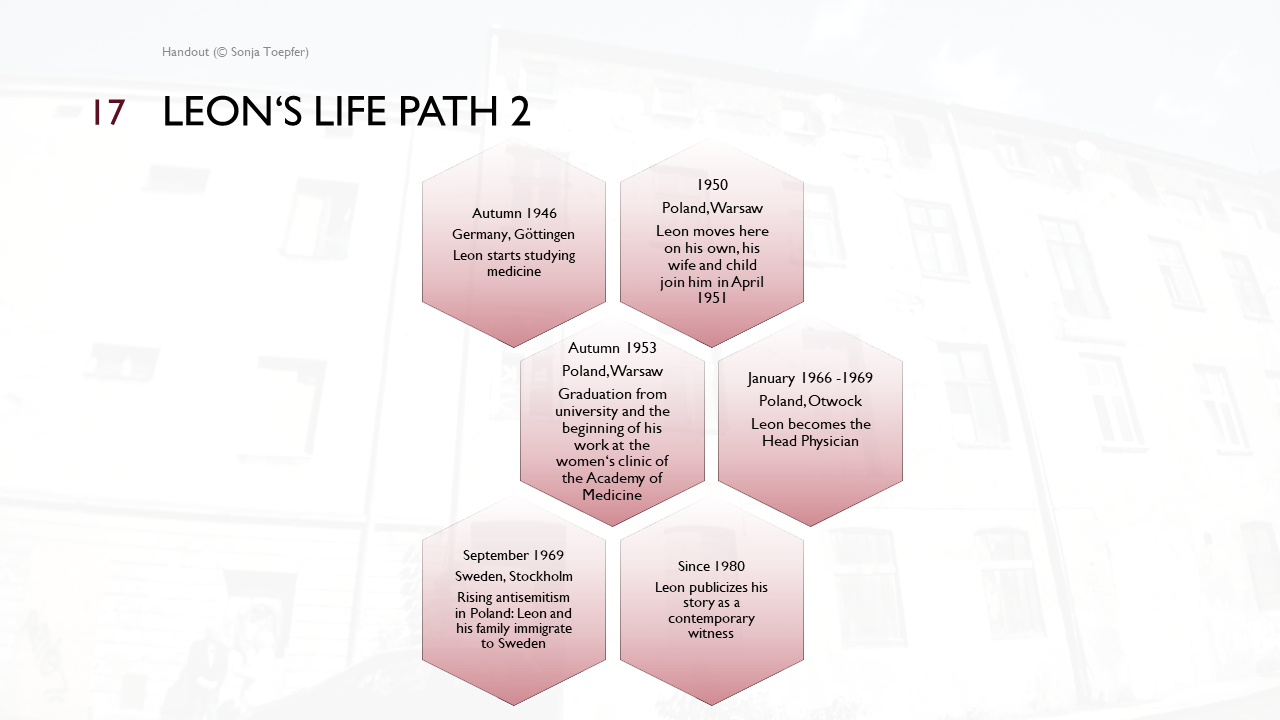LEON WEINTRAUB
A Survivor’s Story
Film and exposition stations
Leon Weintraub
Born in 1926 in Lodz/Poland, first resettled to the Ghetto Litzmannstadt, then deported to Auschwitz-Birkenau. There, he managed to escape death by going to the subcamp of the KZ Groß-Rosen through a prisoner transport.
Later, he was sent to the Camps Flossenbürg and Natzweiler-Struthof.
When he was liberated, he weighed only 35 kg/77lbs.
Today, Dr. Leon Weintraub primarily visits school students and university students as a contemporary witness. His motto: “Forgetting is the Worst.”
Concept
Through biographical stations, the inner memory images of the contemporary witness Leon Weintraub and, thus, also the structures of the Nazi system of oppression are visualized in a reduced and literally tangible symbolic language.
Such a biographical reappraisal of the nationalsocialist ideology, through the usage of films and an individual-related exhibition is a novelty within Germany.
Remembering means visualizing.
We are certain that this exhibition and film will contribute to this.
How the exhibition works
Artistically displayed artifacts are used as “internal memory images”; they are all originals from the 30s and 40s (though not from the camps); the only reproduction is the sign
Seven stations, with their symbolic and haptically palpable artifacts, stand for individual, far-reaching life stations of Leon Weintraub.
Artistically prepared artifacts are used as inner memory images
How the film works
The film visualizes the limitations and the opportunities of the remembrance culture, through its self-referential documental dramaturgy.
The film is divided into six separate chapters and edited in such a way that it can also be viewed in its entirety.
The chapters enlarge upon the exhibit‘s separate stations
Length of the film: 54:10 min
Film format: MP4
Data size: 3,12 GB
1st station/chapter
CHILDHOOD IN LODZ
In the film, we can see the broken, brown window (frame) of his family house, which no longer exists
Length of film chapter: 11:40 min
2nd station/chapter
GHETTO
The sign is a metaphor for the ghettoization of Jewish life in Germany. The sign is a replica.
Film chapter: 10:02 min
3rd station/chapter
TRANSPORTS
The old zinc bucket, with the flies in acrylic, stands for „relieving one‘s self“ during lengthy transports and is a symbol for being utterly at the mercy of others.
Film chapter: 08:02 min
4th station/chapter
SELECTION (Auschwitz 1)
The shoes made of wood and leather symbolize the arrival in the KZ and the selection process.
Film chapter: 04:30 min
5. Station/ 5. Kapitel
DEHUMANIZED (Auschwitz 2)
The tin spoon symbolizes the ever-present hunger.
Film chapter: 07:41 min
6th station/chapter
ESCAPE (Auschwitz 3)
The old insulator is a metaphor for the lethality of the KZ-fence, but also for Leon Weintraub’s work effort as an electrician, which eventually helped him escape.
Film chapter 11:44 min
7th station
The showerhead is a metaphor for the ever-present “final solution.”
Leon Weintraub talks about the daily presence of death, from his perspective as a survivor. This omnipresence is not a separate chapter.
Concentration and extermination camps
Overview of the T4-euthanasia centers and the main deportation routes in 1942
Source: Informationen zur politischen Bildung, Nr. 316/2012
Anti - Jewish measures
Chronology – Excerpt
Staff
Idea: Gunter Geiger
Film
Direction, Camera, Editing: Sonja Toepfer
Narrator: Wolfgang Rosenkötter
Sound, Music: Kai Powalla
2nd Camera:Christian Lamping
Exhibition
Conceptualization, Implementation: Sonja Toepfer
Schweißarbeiten: Metallbau Hämmerle, Mücke
Soundanlage: Kai Powalla
Expert Advice: Dr. Irene Nehls, Christian Lamping
